 Your new post is loading...
 Your new post is loading...
Edelman has just worked with the Reuters Institute on the release of its new report on the state of the media industry around the world. There are a few shocking findings, most notably the rise of niche politicized outlets, such as the left-wing Aristegui Noticias in Mexico and the far-right leaning Breitbart in the U.S.; the inclination of some consumers to opt out of news altogether; and the stunningly low trust in media in markets such as South Korea on the basis of excessive business and political influence. Here are the most important findings....
Fresco is a lot like Uber. But unlike similar apps where you request a car, takeout, or a even a dog walker, Fresco puts a call out for a photojournalist. A newsroom posts a request for video of, say, a crime scene, and a Fresco user in the area can accept, take a video of it, and upload it to Fresco. If the news outlet uses it, the Fresco user gets paid $50.
TV news stations across the country are using the app, but Fresco is particularly appealing to KTBY, a station in Anchorage, Alaska. Alaska is a big state, and many of KTBY’s viewers live in remote villages that are hours away by plane. It’s hard to cover those communities without spending a ton of money and time. In a Fresco promotional video, Scott Centers, COO of Coastal Television Broadcasting Company, which owns KTBY, marvels that Fresco offers an affordable alternative.
When I started my career at The Washington Post in the late 1990s, the newsroom wore a dusty, outdated look as if it were paying homage to its legendary past. The Post of today occupies an updated building on D.C.'s renowned K Street, in modern, glass-walled offices with a Silicon Valley aesthetic. This is the Post after Jeff Bezos, the Amazon CEO and e-commerce visionary, bought it in 2013. Since then, the paper's business and technology has almost outshone its award-winning journalism. Before Bezos, the Post was losing revenue and its losses were widening, as it struggled to find income to replace its decline in print ads. The Post is now privately owned and doesn't discuss specific figures, but says revenue and profits are up, as subscribers grow and digital ad revenue increases. Its monthly Web traffic has grown 56 percent, to 78.7 million over the past two years, according to ComScore. That reflects its journalism, but it also reflects big changes under the hood. Under Bezos, the newspaper has transformed its operations, from how it writes headlines and chooses photos, to how it generates ad dollars....
Facebook has started deploying new weapons in its battle against fake news. The election of Donald Trump to the presidency of the United States has led to a lot of soul-searching, not least of which by the world’s largest social network. Facebook has been repeatedly accused of facilitating and magnifying an ecosystem of websites that spread false information and conspiracy theories across the platform. That criticism led Facebook to announce late last year that it would be collaborating with “third-party fact checking organizations” to identify stories that don’t hold up to scrutiny, and warn users when they try to post these stories. The new feature appears to be picking up steam. The Facebook fact-checker has begun flagging a story that was shared widely on the lead-up to St. Patrick’s Day (March 17) that falsely claims thousands of Irish people were brought to the United States as slaves. This is what happens when you try to share the story on Facebook...
“In a world where we had control of such things,” Tom Jolly, the associate masthead editor at The New York Times, told me in an email, “we’d break the big stories early in the day, when more people are online.” This dynamic is, in a strange way, a throwback. As Matt Pearce, a national correspondent for The Los Angeles Times pointed out in a string of tweets Wednesday night, “it's like we’ve bizarrely returned to the era of the evening edition.” The news alert that The New York Times distributed to readers’ cellphones Wednesday night. About one hour after Times readers received a news alert Wednesday night, The Washington Post notified readers of its latest scoop. In the late 19th and 20th centuries, the evening edition was the newspaper you grabbed for your commute home from work. Because it was published in the afternoon, it was the best way to get the most up-to-date news in print. After all, by the time the work day ended, that day’s morning paper covered events that had taken place at least a full day before....
This chart shows U.S. voters' attitudes towards the trustworthiness of the media and/or the president (in percent) Never since Richard Nixon was in office more than 40 years ago, has a President had such an antagonistic relationship with the media like Donald Trump has today. He considers himself at war with the media and calls outlets whose reporting he disapproves of “fake news”. There seems to be a corrosion of trust in either the President or the so-called Fourth Estate, depending on your political preferences....
American news consumers are slightly more likely to access digital news through an organization’s website or app than they are to get it through social media, according to a recent Pew Center analysis. Thirty-six percent of consumers said they received digital news from an organization’s website or app, while 35 percent said they got it through social media. Twenty percent received news via a search engine; 15 percent received it through emails, texts or alerts from a news organizations; and seven percent got it through an email or text from family members or friends. One of the most notable findings of the analysis is that news consumers are more likely to remember the name of the news organization from which a story came if they followed a link from an email, text or other alert from the organization. The average rate for recall was 78 percent. The rate was 52 percent if the link came from social media and 50 percent if it came from a family member or friend through email or text....
As journalists continue to critique their coverage of the presidential election, Nieman Reports is publishing an ongoing series of articles exploring the issues, challenges and opportunities—from newsroom diversity to fake news to community news outlets—that will inform reporting going forward. The full list of articles is below.
Each month, MediaShift posts a chart from Storyclash ranking publishers and news stories that get the most social media interactions. Storyclash regularly publishes rankings of Social Media Trends, covering online articles with the most social media interactions on Facebook and Google+.
The top story of the year according to analysis from Storyclash wasn’t the election. It was the moon. The November supermoon got publisher ScienceAlert 2.8 interactions and beat out stories about Hillary Clinton, Donald Trump and Queen. Below is the full list of the top social news in 2016 from Storyclash....
Three weeks after Donald Trump won a historic victory to become the 45th president of the United States, the media postmortems continue. In particular, the role played by the media and technology industries is coming under heavy scrutiny in the press, with Facebook’s role in the rise of fake news currently enjoying considerable coverage. This represents a shift from earlier in the campaign, when the volume of media airtime given to Trump was often held culpable for “The Apprentice” star’s political ascendancy. In truth, a Trump presidency is – in part – a reflection of the status and evolution of the media and tech industries in 2016. Here are 10 ways that they combined to help Trump capture the White House in a manner not previously possible. Without them, Trump might not have stood a chance....
More bad news about fake news: A new survey from Morning Consult finds more than 70% of Americans have heard about the “fake news” controversy, and nearly half (49%) say they have been exposed to fake news at least once a day through Facebook and Twitter.
In addition, 69% of those polled said they have started to read a news story only to realize later that it wasn’t real.
On the question of whether Facebook, Twitter, and Google should be able to censor fake news, a majority of Americans say they are comfortable with tech companies censoring fake news — 71% said it was appropriate for Google, Facebook and Twitter to remove fake news, and 67% said it was appropriate for Web service providers to remove it.
With regard to who is most responsible for policing fake news, Americans think they and social media sites are most responsible for policing fake news, but believe all actors must play a role. For example, 24% of Americans said "the person reading the news" is the most responsible for ensuring they are not exposed, followed by Facebook and Twitter at 17%. The government comes in third with 14% of the vote, followed by Web services providers at 10%, and search engines (such as Google) at 9%.
Since Election Day, President-elect Donald J. Trump has proposed a U-turn in American diplomatic relations with Cuba, boasted about negotiations with a major manufacturer, trumpeted false claims about millions of illegal votes and hinted that he might upend current free speech laws by banning flag burning.
All in 140 characters or less.
As news organizations grapple with covering a commander in chief unlike any other, Mr. Trump’s Twitter account — a bully pulpit, propaganda weapon and attention magnet all rolled into one — has quickly emerged as a fresh journalistic challenge and a source of lively debate.
How to cover a president’s pronouncements when they are both provocative and maddeningly vague? Does an early-morning tweet amount to a planned shift in American policy? Should news outlets, as some readers argue, ignore clearly untrue tweets, rather than amplify falsehoods further?...
Paul Horner is a professional fake news writer, whose completely made-up story about the Amish committing their vote to Trump got over 134,000 likes on Facebook; his story about Obama signing an executive order to invalidate the election results has over 250,000 likes. This week, The Washington Post’s Caitlin Dewey interviewed Horner--who is stunned that his work gets accepted as true. “I think Trump is in the White House because of me. His followers don’t fact-check anything -- they’ll post everything, believe anything. His campaign manager posted my story about a protester getting paid $3,500 as fact. Like, I made that up. I posted a fake ad on Craigslist… I thought they’d fact-check it, and it’d make them look worse. I mean that’s how this always works: Someone posts something I write, then they find out it’s false, then they look like idiots. But Trump supporters -- they just keep running with it! They never fact-check anything!”...
|
Arguably the biggest digital media story of 2017 has been the case of brands pulling spend from Google properties following an investigation by The Times of London which contained evidence of branded adverts appearing next to controversial content on its video-sharing site YouTube. This has prompted a torrent of chest-thumping vitriol from ‘legacy publishers’, namely from The Times' owner itself News Corp, which itself harbors ambitions of launching its own ad network. The publishers strike back However, others from the ‘legacy publisher set’ have added volume to this cry, with this week’s appeal from members of The News Media Alliance which lobbied the US Congress to repeal laws that prevent them from collectively negotiating with Google (and Facebook) as they constitute “a de facto duopoly that is vacuuming up all but an ever-decreasing segment of advertising revenue”....
The publication of the annual Digital News Report, from the Reuters Institute for the Study of Journalism at Oxford University, is eagerly awaited by news execs around the world. So much so, that the 2017 study is being accompanied by major presentations on June 22 at the GEN Summit in Vienna, and at the Tow Center for Digital Journalism at Columbia University in New York. Clocking in at 133 pages, this sixth annual study, has been expanded to cover 36 different markets around the world (the first, in 2012 examined just five countries), shedding light on many countries – including nations featured for the first time such as Mexico, Malaysia, Croatia and Romania – which are seldom reported in English-language media. Against this backdrop it’s fascinating to determine some of the similarities – and differences – between digital news habits in the U.S. and the rest of the world. With that question in mind, here are seven important developments worth highlighting....
When Americans encounter news on social media, how much they trust the content is determined less by who creates the news than by who shares it, according to a new experimental study from the Media Insight Project, a collaboration between the American Press Institute and The Associated Press-NORC Center for Public Affairs Research. Whether readers trust the sharer, indeed, matters more than who produces the article —or even whether the article is produced by a real news organization or a fictional one, the study finds. Who shares an article on social media influences whether people trust it, research shows As social platforms such as Facebook or Twitter become major thoroughfares for news, the news organization that does the original reporting still matters. But the study demonstrates that who shares an article on a social media site like Facebook has an even bigger influence on whether people trust what they see....
Dear President Trump, As journalists and founders of a network of media professionals in over 180 countries, we are seriously concerned with your attacks on the news media and your disregard for the truth itself. Your attempt to discredit legitimate media organizations, as well as the barring of media companies from your press conferences last week, are an insult to our esteemed colleagues who risk their lives every day to report the truth, and to the United States Constitution you took an oath to defend. Attacking the news media with a broad brush and attempting to delegitimize media outlets critical of the government is exactly how Hugo Chavez and Vladimir Putin began their presidencies. It was the first step they took in weakening democracy in Venezuela and Russia. By driving a wedge between the people and the media, and by using the power of the presidency to intimidate journalists, these leaders built corrupt, authoritarian regimes with few checks on their power and limited recourse against human rights violations. Thanks to our Constitution, our deep cultural tradition of press freedom, and the surging desire of the American people to access quality journalism, those tactics will not work in the United States....
Opinary has its own newsroom that creates editorial polls, which can then be integrated into a news site in place of comments. Behind the scenes, a data science team tracks the opinions of more than 25 million monthly users and reflects their results to publishers and readers. Currently, Opinary has partnerships in Europe with The Times, The Independent, Huffington Post and others. In January, Simon Galperin joined Opinary as their U.S. head of growth. His goal: to identify how to maximize social impact in coordination with publishers and journalism networks like the Institute for Nonprofit News, Solutions Journalism and Reveal. We talked with Galperin about how to measure engagement, reinvented....
Wired magazine recently published, Keeping Up with the Times, a story about the New York Times and its slow & painful transition to a digital first publication. “It’s to transform the Times’ digital subscriptions into the main engine of a billion-dollar business, one that could pay to put reporters on the ground in 174 countries even if (OK, when) the printing presses stop forever,” Gabriel Snyder (one of my favorite writers, by the way) wrote in his in-depth feature, which is worth reading.
After reading the piece, I thought let’s see how the Times is really doing — by the numbers. With help of Nima Wedlake, I came up with data to chart the progress made by the company, to see how far it really is from its transformation into a billion-dollars-in-digital-business. Have a look:
The company reported revenue of nearly $1.6 billion in 2016 — remarkably consistent with prior years. But under the surface, the mix of revenue is changing dramatically as revenues from its print advertising business continue to decline....
Using NewsWhip Analytics, we can rank the performance of all sites, based on how many Facebook engagements they achieved with links to their website, published in Dec 2016 only.
It’s important to remember what we’re measuring here in this analysis. We aren’t looking at the impact of native videos or images on Facebook, but rather how links to owned websites, as well as Instant Articles, performed in terms of social engagement on the platform.
Here are some of the key points this time round:
– IndiaTimes.com comes out as the most engaged English language sites on Facebook in December 2016, with over 25 million engagements on content published that month.
– NBC, Fox and CNN make significant gains to finish in the top five sites on the platform.
– There has been a general narrowing of the field for top publishers, with a difference of just seven million engagements between the first and tenth sites....
More than five years ago, Tom Rosenstiel and Bill Kovach released their guide to helping news consumers sort fact from fiction. “Blur: How to Know What’s True in the Age of Information Overload” covers many topics — how to evaluate sources, how to know whether a news account is complete, how to verify questionable claims — that are timely given the avalanche of information that circulated during this election year. One line in the first chapter is particularly prescient given the recent influx of fake news (wholly false stories) and misinformation (false or inaccurate information): “Citizens have more voice, but those who would manipulate the public for political gain or profit — be it corporations or the government — have more direct access to the public as well.” Rosenstiel could never have predicted the details of how this would soon play out: teenagers in Macedonia, among others, profiting off fake news they created about the 2016 presidential election that spread quickly through social media. How would he amend his book given all that’s happened in the last year?...
All the discussion recently about the impact and reach of FAKE news is important, and I’m glad it’s being examined so deeply. Clearly that is part of the problem to be solved — but it’s only one part. I’m not letting REAL news off the hook. As someone who has deeply considered news nutrition, public engagement, and what makes our democracy function well (or not), here’s my diagnosis of what happened. The top 10 ingredients of a ‘Social Media Revolution Election’: Fragmented media consumption. People are consuming content on more screens in more forms than ever. Online, Text, Television, Video, Radio, On demand Audio/podcast, Social Media and via Search. Redundancy of mass media news content: dominated by the Eastern corridor-based perspectives (same people, same tone, same talking heads, same horse-race obsessions with various biases). Did you know that 6 companies drive what ~90% of Americans see from mass media sources? Commercial news as entertainment: pressures of the bottom line and disruption, translate to a focus on stories and coverage that drives clicks and views to generate higher advertising revenue. Lack of inclusion in the news: diverse races, gender, geographic locations, etc. are not seeing themselves in the news or are shown in highly stereotypical ways (which creates a distortion of reality). These audiences thus seek more relevant and relate-able alternatives, while the people who remain to consume mass media are not getting the full story. This leads decreasing knowledge and an overall lack of connection and empathy....
Since winning the presidential election, Donald Trump has reportedly skipped out on the majority of his intelligence briefings; this past Sunday, Trump made headlines after sharing false information blaming his loss of the popular vote on mass voter fraud — a claim previously reported by the conspiracy news site Infowars. It’s been widely reported that Trump is an obsessive consumer of cable news — he has himself admitted to receiving at least a portion of his military advice from “the shows.” But, pundits and chyrons aside, relatively little is known about where the next president will find the news and commentary that might color his time in office. What exactly is Trump’s media diet?
What we know of Trump’s relationship to the modern internet suggests the president-elect rarely browses it himself. Trump campaign press secretary Hope Hicks told GQ he relies largely on Google News printouts from staffers and sparingly reads his own email. And a 2007 deposition suggests that Trump doesn’t use a computer or carry a smartphone during the daytime hours, and often dictates daytime tweets to his assistants.
To better understand Trump’s media consumption, BuzzFeed News turned to the president-elect’s largest source of public proclamations and shared news: Twitter. While Trump’s media consumption and methods appear opaque and unconventional, the stories he chooses to share with his now 16 million–plus followers offer a unique window into the news and commentary that catch his eye...
Our analysis revealed a media ecosystem that appears to largely reinforce and affirm the views publicly expressed by Trump and his closest advisers. The news stories Trump tweets share several characteristics: 1) They often favor sensationalism over facts and reporting; 2) They frequently echo direct quotes from Trump himself or his closest advisers; and 3) They routinely malign his enemies and vindicate his most controversial opinions.... The stories shared by Trump’s account throughout his campaign suggest the president-elect has constructed a powerful online filter bubble that largely flatters and confirms that which he claims to be true....
Each month, MediaShift will post a chart from Storyclash ranking publishers and news stories that get the most social media interactions. Storyclash regularly publishes rankings of Social Media Trends, covering online articles with the most social media interactions on Facebook and Google+. Below is a look at the top stories and publishers in Storyclash’s analysis for the month of November. In November, the Huffington Post rose the ranks to the top spot with LittleThings.com, USA Today, Washington Post and Breitbart filling out the top five in that order. The top post for the month had to do with the Supermoon, followed by a Business Insider post about how to move to Canada....
If you thought you heard the last on fake news, you were sadly mistaken.
A Stanford study found that the majority of middle school students can’t tell the difference between real news and fake news. In fact, 82 percent couldn’t distinguish between a real news story on a website and a “sponsored content” post.
Of the 8,704 students studied (ranging in age from middle school to college level), four in ten high-school students believed that the region near Japan’s Fukushima nuclear plant was toxic after seeing an unsourced photo of deformed daisies coupled with a headline about the Japanese area. The photo, keep in mind, had no source or location attribution. Meanwhile, two out of every three middle-schoolers were fooled by an article on financial preparedness penned by a bank executive.
It seems that those surveyed in the study were judging validity of news on Twitter based on the amount of detail in the tweet and whether or not a large photo was attached, rather than focusing on the source of the tweet.
The WSJ, which first reported on the study, says that a big part of solving this problem among young people comes down to education, both at school and at home....
|



 Your new post is loading...
Your new post is loading...



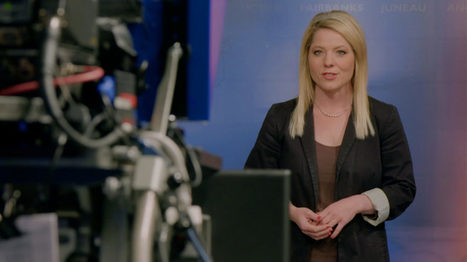


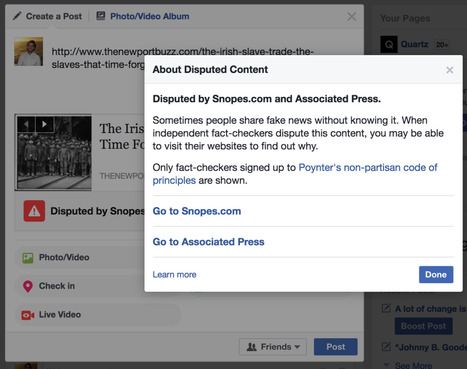






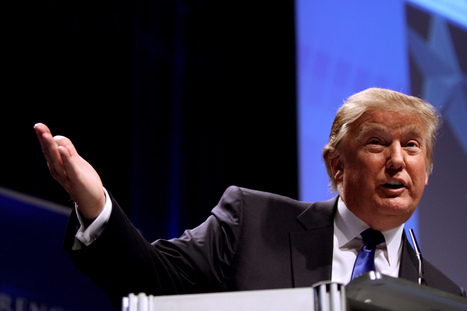


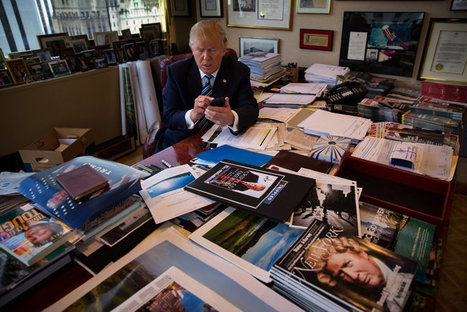



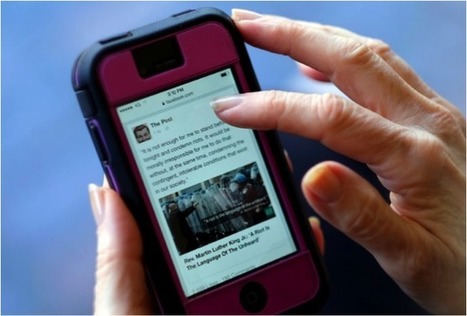
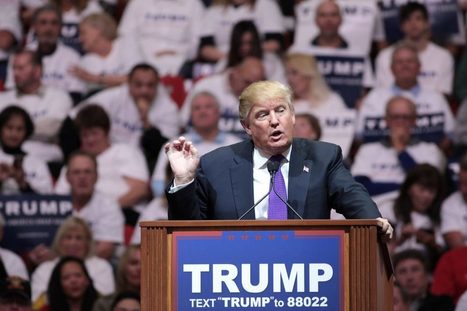
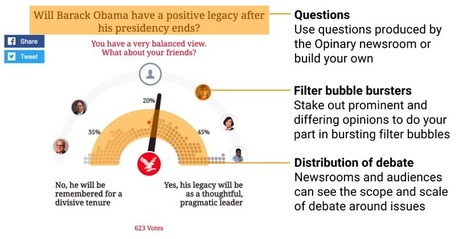
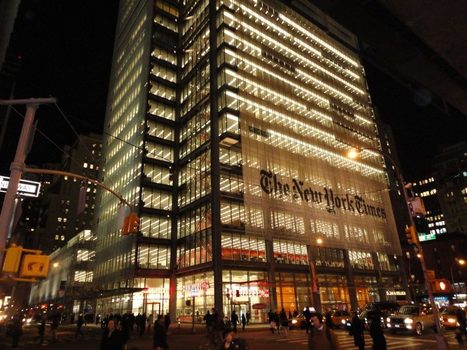
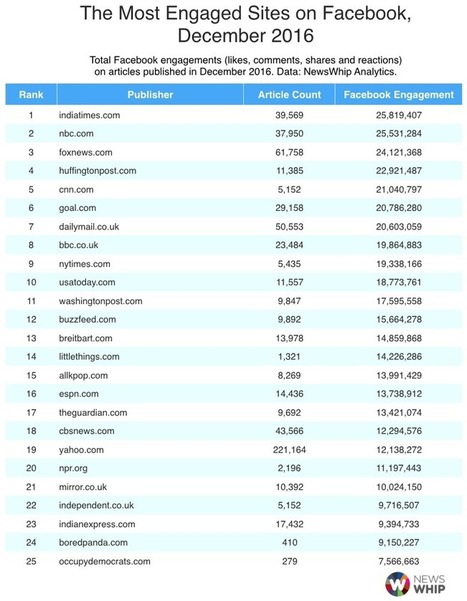
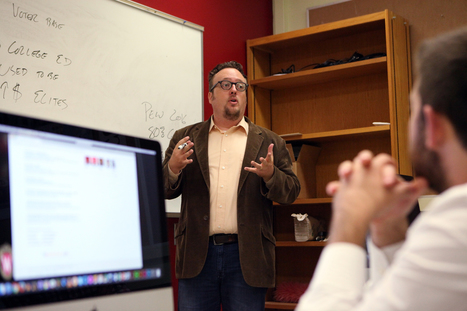
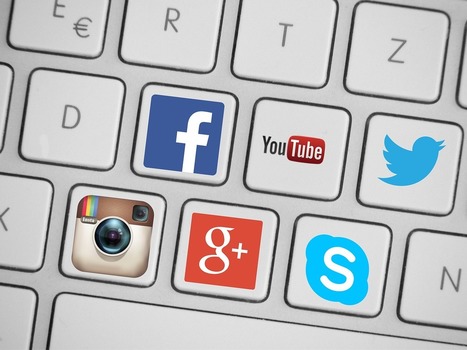
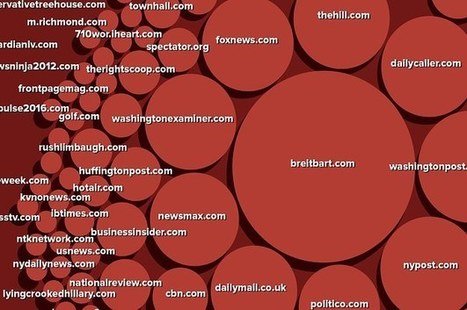

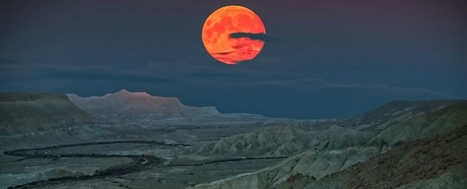







Lots of news insights and a few surprises in this Reuters report.